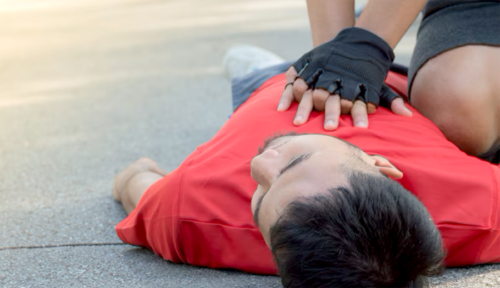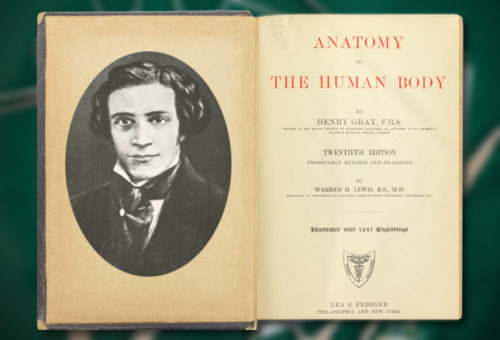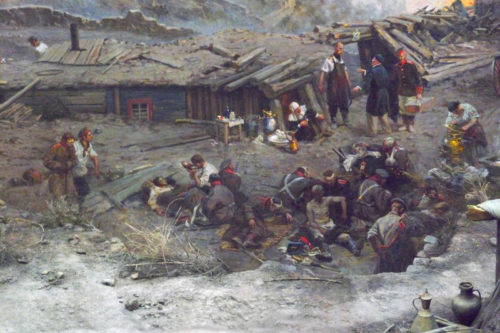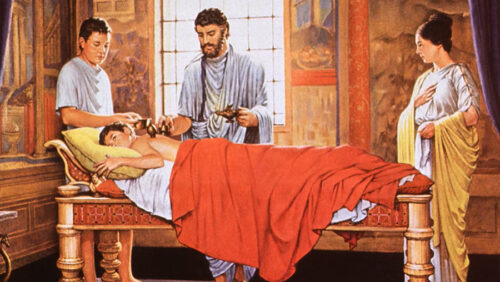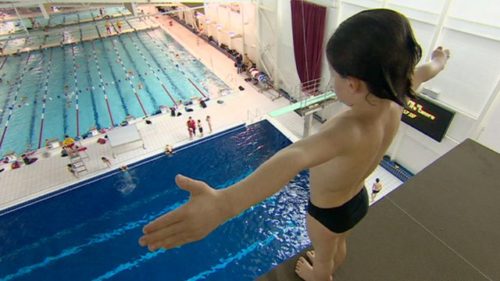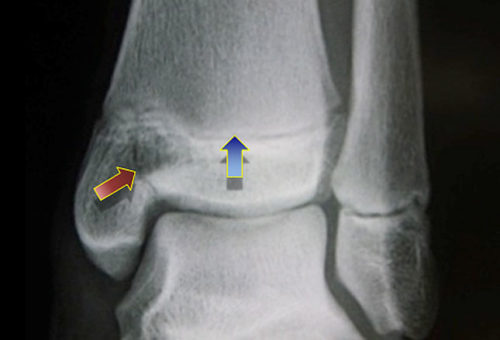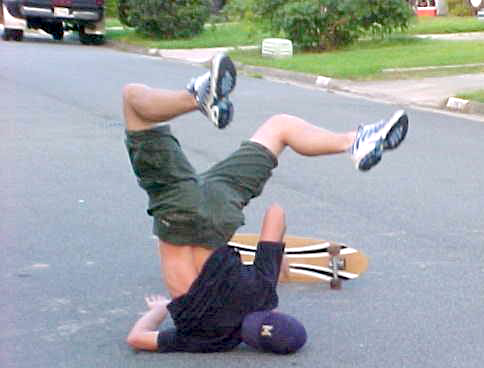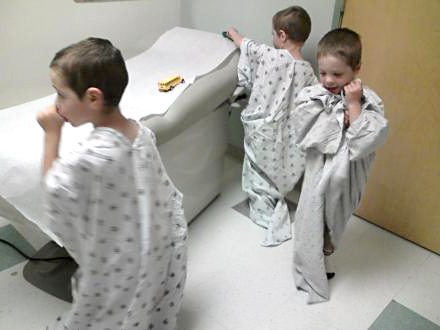This was a fun series of articles to write, but about an almost terrible experience on a 17-year-old boy athlete. It made the papers when he ostensibly had a “heart attack” on the baseball field.
The reader gets to “see the patient” and make a diagnosis (and see my humorous side) while learning about the four causes of sudden cardiac arrest in a child.
In follow-up we see some of the emotional side-effects of the near-death experience, exacerbated by viewing social media; and learn methods of problem-solving the correct way.
5 Posts in "Child Cardiac Arrest" Series
- Commotio Cordis: Prevention and Return to Play – 9 Sep 2016
HEEES BAAAAACK! The 17-year-old who you've (well I've) been treating for his heart problem: Commotio Cordis. He's several weeks now from his near-death experience and is back for his second follow-up and a discussion about: Survivability, Prevention and Return to Play.
- Commotio Cordis: Treatment and Prevention – 26 Aug 2016
You made such an impression on that 17-year-old boy who nearly died on the baseball field last week that he's now back for his followup with the question: “When can I go back to playing baseball?” Well, how about it?
- Sudden cardiac arrest - case – 7 Aug 2016
A somewhat interactive educational article about the four most common causes of sudden cardiac arrest and collapse in a child: Hypertrophic cardiomyopathy, Myocardial infarction, Long-QT syndrome and Commotio cordis.
- Sudden cardiac death – 26 Jul 2016
Sudden cardiac death in children is an "eye-opener" and shouldn't happen, especially to a healthy athletic one… right. But it does happen, all too often; and when it does it often make the newspaper. This article lets you be involved with a 17-year-old athlete who does just that— good luck!
- Sudden Cardiac Arrest in a Child: Intro/Index – 25 Jul 2016
A heart attack or death of a child is always a major and emotional event; but, when it occurs in an otherwise healthy child participating in a sport even it often makes the news. These posts explain most of the why, who and how's of these dramatic occurrences.
If you’ve enjoyed this little romp through children’s sports issues you might like to read about children’s fitness.
The popular TV series “Gray’s Anatomy” popularizes the name of a seminal breakthrough medical pioneer and his book; but, not one in 100 viewers has a clue about why the series’ title was chosen and who “Dr. Gray” really was.
Read more →
I recently followed along for several weeks as a medical information site posted their ranking of the “Top 50 Most Influential Doctors in History.” Despite the fact that I benefitted from their insight and life’s accomplishments nearly every day, I had almost no clue who many of them were.
Read more →
I’ve seen a list of the Top 50 Most Influential Physicians of All Time somewhere, I think in a physicians-only magazine called Medscape. It was compiled by physicians, I suppose from some committee somewhere.
Reviewing it, I’d heard of nearly every name on the list save it be a couple, so I typed one or two into Wikipedia to see what they had on the doctor and was pleasingly suprised with the new insight. These people had done amazing things, many against terrible odds, most with huge personal sacrifice and a few barely escaping dangerous backlash and physical hurdles (or not).
I decided to start a historical series myself, explaining in more detail their contribution to the medical care you and I take for granted today. That was more years ago than I’m proud of; but, I’m still struggling to add these tough-to-write posts to this series.
25 Posts in "50 Most Influential Doctors in History" Series
- 27 - Charles D. Kelman - Cataracts – 9 Mar 2023
Pioneer in Ophthalmology, Surgeon, Inventor, Jazz Musician, Entertainer, Broadway Producer, Lecturer and Author
- 28 - Cicely D. Williams, Kwashiorkor, Breastfeeding, Whistleblower – 21 Jun 2022
Pioneering Pediatrician, Prisoner of War, Discoverer of Kwashiorkor Malnutrition and Tireless Advocate for Children
- 29 - Dame Cicely Saunders, Hospice – 23 Apr 2018
Founder Of The First Modern Hospice
- 30 - David L. Sackett, Evidence-based Medicine – 2 Apr 2018
The “Father” of Evidence-Based Medicine
- 31 - E. Donnall Thomas & Joseph Murray, Bone Marrow Transplants – 23 Feb 2018
Defeaters of Cancer, Winners of Nobel Prize
- 32 - Elizabeth Blackwell, women in medicine – 29 Jan 2018
Anything But Accidental, First U.S. Woman MD
- 33 - Elisabeth Kübler-Ross, stages of grief – 5 Jan 2018
Taboo Breaker, Medical Care Transformer, Hospice Founder
- 34 - Watson & Crick, DNA – 2 Dec 2017
The STRUCTURE of DNA—A “Discovery” Against Advice
- 35 - Mahmut Gazi Yaşargil, Micro-Surgery – 24 Oct 2017
Neurosurgery’s Man of the Century, Humanitarian, Educator
- 36 - George Papanicolaou, Cytopathology, Cancer – 29 Sep 2017
PAP Smear and Early Cancer Detection
- 37 - Dr. James Parkinson, Parkinson's Disease – 1 Sep 2017
Parkinson's Disease—Renaissance Man in the Age of Enlightenment
- 38 - Dr. John Snow, cholera – 20 Aug 2017
Cholera—Commoner, Physician, Epidemiologist
- 39 - Dr. Joseph Kirsner, GI Joe – 27 Jul 2017
Colon Cancer, IBS—“GI Joe,” “Doctor’s Doctor,” Decagenarian
- 40 - Lawrence (Larry) Einhorn, chemotherapy – 16 Jun 2017
Gentle Giant—pioneer in cancer treatment
- 41 - Robert Koch, modern bacteriology – 21 Mar 2017
Bacteriology—World Traveler, “Bug” Hunter and Prize Winner
- 42 - Stanley Dudrick, TPN – 28 Feb 2017
Total Parenteral Nutrition—From Beagles to Babies—A Living Legend
- 43 - Stanley Prusiner, neurodegenerative diseases – 25 Jan 2017
Neurodegenerative Diseases—Heresy to Orthodoxy, Hate Mail to Honoraria
- 44 - Victor McKusick, medical genetics – 3 Jan 2017
Genetics—Meticulous Researcher, Compassionate Clinician
- 45 - Virginia Apgar, anesthesiology & newborn care – 12 Nov 2016
Blue Babies—Cultured, Determined, Gentle Giant of Medicine
- 46 - William Harvey, circulation – 12 Oct 2016
Circulation—Aristocrat, Anatomist, Physician to The King
- 47 - Zora Janžekovič, burns – 26 Sep 2016
Burns—Everything You Hope A Doctor Would Be
- 48 - Helen Taussig, blue babies – 3 Sep 2016
Cardiology—Awarded, Authored, Discriminated, Overcomer, Dyslexic, Deaf, Teacher, Compassionate… Life-long Learner
- 49 - Henry Gray, anatomy – 3 Jul 2016
Anatomist, Surgeon, Author, Educator… Devoted Uncle
- 50 - Nikolay Pirogov, field surgery – 11 Jun 2016
Father of Field Surgery; anesthesia; casting; educational reform
- Top 50 Doctors: Intro/Index – 10 Jun 2016
The top 50 most influential doctors in history—Judged by peers in their respective fields today. As suggested by Medscape magazine for physicians and written by Pediatric House Calls.
A few other posts also describe physicians of note, like in the series Unaccepted Medical Breakthroughs you might like to read.
Pediatric Concussion Management
Getting Back in the “Game”
This video is another one of Dr. Mike Evans productions where he explains in clear language what a concussion is and how it is treated. More specifically how a child should help themselves heal so they can have the best chance of returning to full activity levels – always the goal.
It is an updated version of his previous video (still available) which includes all the new information we’ve learned about the topic over the last several years of player observation and research – and that’s a lot!
You’ll also note that this post adds to the growing collection of articles I’ve written in this series about concussion in children and teens; which not only reflects the fact that concussion makes up a huge percentage of cases of morbidity and death in the US, but that it’s also largely preventable and therefore unnecessary – as well as one of the hottest topics in medical research these days. Give all of them a look-see, the links are in the box below.
[The web site www.allkids.org/ has more information or, better yet, you can contact your own school’s administration for information about your local return to learning policies.]
Thirty-six million kids participating in organized sports across the US means that 2.6 million of them will be treated in ERs this year with sport’s injuries – and that’s not counting informal recreational activities or kids over 19.
Read more →
We’ve written about common summer problems in previous posts. But we’ve got a new crop of kids going out the front door now this season and a new crop of parents worrying about their bumps, bruises and fractures.
Read more →
Concussion 101
a Primer For Kids and Parents
The “Concussions 101” title is used by Dr. Mike Evans for his short video because it covers the basic information that kids and their parents need to understand when they’ve had a concussion – sort of like the “101” courses you take in college do.
Dr. Evans is a “family practitioner” – [we pediatricians don’t hold that against him] – who has a way with little video segments and has “hit the nail on the head” – [oops, poor analogy, sorry] – with this short summary.
Oh, this is not the complicated medical stuff that we doctors worry about; it’s merely three of the things which are sometimes considered so “simple” that nobody thinks to talk to you about them!
- We don’t wanna make things worse – we follow “return to activity” protocols to prevent life-long secondary damage.
- We can’t predict from the beginning what will happen or how you will do – “we have to prepare for the worst and hope for the best.”
- Communication – people presume you’re ok because they can’t see your brain; so, you need to be clear and honest about how you’re feeling.
Your brain is You. Everything you’ve gotten good at is stored in there; all your memories, all your skills for figuring things out for school or life are built into your brain.
Take care of your awesome brain after your concussion!
Ok, this is technically just bizarre and I’m not sure how to really present it; BUT, this issue about brain injury is just so compelling and important (if it’s true) that it clearly must not go unsaid.
The bizarreness comes because a “back-door” finding in a “brain injury and hypothermia” study showed a substantial finding about an “un-related” issue: feeding!
Read more→
We’re talking here about parents getting a good night’s sleep and we’ve already laid some extensive background in part one and discussed that good infant sleep IS possible but doesn’t come “naturally” by any means. Pretty much, by the time you’ve figured how to do it easily you’re done with having kids.
Additionally, part of that learning is coming to an awareness of how “touchy” Read more→
I’m afraid that all the things I know about the topic “sleep problems in infants” rattle around in my brain in a fairly “jumbled” manner. Frankly, the topic of infant sleep is probably the most frequently asked group of questions from new parents and in the “top 3” for all parents; but still….
The reason it’s so “jumbled” is FIRST Read more→
Not so long ago, in collaboration with the Washington Post, a clinical news source for physicians called “Medscape” [which I read frequently] ran an article entitled “When Doctors Don’t Do A Good Physical Exam Patients Loose.”
Read more→
:

